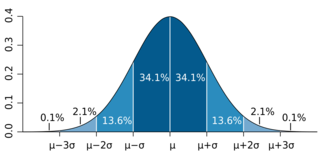Environment
Does Everything Contain Its Opposite?
Coincidences exercise minds by holding a polarity and continuum simultaneously.
Posted July 13, 2022 Reviewed by Davia Sills
Key points
- Attention to meaningful coincidences can exercise the mind in several ways.
- The notion that everything contains its opposite has existed throughout philosophical thought.
- In addition to the implications of meaningful coincidences, there are many examples of everything containing its opposite.
- In this increasingly polarized world, training minds to consider polarities and continua simultaneously could help resolve many conflicts.
Paying close attention to coincidences exercises the mind. Exercise benefits the mind just as it benefits the body (Small, 2018). Thinking about a coincidence is like peering into the unknown or trying to solve a riddle: “I wonder what this means?” Wonder leads to curiosity, which drives solution-seeking. Coincidences are like puzzles that lead people to think about their own identity and how relationships work. And they challenge our standard view about how reality works (Beitman, 2022).
Meaningful coincidences challenge the assumption that each person is entirely separate from their environment. When a coincider notices a remarkable similarity between a thought and an object, the boundary between self and not-self begins to blur.
How are events in my mind correlating with external events?
Meaningful coincidences that involve a mental event and an objective event suggest that the polarity of self versus non-self may not be so clearly demarcated. These mind-object coincidences challenge the primacy of dualism by suggesting that mind and context are closely linked rather than distinctly separate. Attention to coincidences exercises the mind to simultaneously hold a polarity (mind separate from the environment) and a continuum (mind and context are connected).
Another challenge then appears—to conceptualize the mind as both separate and distinct from and also part of the environment—a polarity of self and not-self, linked by a continuum of degrees of connection. It’s not easy for our minds to hold a polarity and the continuum between them simultaneously. It is much easier to think in terms of either polarity or continuum but not both together at the same time.
This mind-environment polarity-continuum illustrates the notion that “everything contains its opposite.” The polarity contains the continuum, and the continuum contains the polarity. This observation merges ancient philosophy and modern science.
Ancient philosophy
The pre-Socratic philosopher Heraclitus declared that the only constant is change, that much in life is always changing, yet ever the same. Change contains its opposite—constancy. Constancy yields to change. The road up contains the road down. The moon, from our perspective, waxes and wanes, rises and sets—constantly changing. Yet its paths and shape remain constant. Human beings constantly change, yet our basic physical characteristics, patterns of thought, and behavior are guided by the same underlying principles.

The idea of everything containing its opposite is represented by the yin-yang symbol in which the whole is divided into two parts, and within each part is a mirror of the opposite part.
Modern science
More currently, the normal curve (the bell-shaped curve, the Gaussian curve) contains opposites in its two tails. For human height, for example, one tail represents extremely tall, and the other represents extremely short. The entire curve contains its opposites by describing the entire range of human height.
The geometry of energy movement illustrates the same idea. Sound waves are composed of expansion and rarefactions of the medium through which the sound is passing (air, water), which can be drawn as a sine wave. Electromagnetic energy also moves with the rhythm of sine waves—movement up is equalized by movement down. The sine wave contains two polarities.

Day heralds night; night heralds day. Each day contains polarities. From physics: For every action, there is an equal and opposite reaction.
Philosopher Iain McGilchrist adds other examples: The general is found in the individual, the eternal in the temporal, and the spiritual in the embodied (p.816). He suggests that consciousness must somehow be divided if there are to be individual beings. The individual correctly perceives a self, but a self that is connected to the whole, wholly a self, and wholly part of the whole… what exists is a locally differentiated but ultimately single field of potentiality, which is constantly actualizing itself. Thus, all is one, and all is many (p.1104) from Lorimar (2022).
Comment
Exercising the mind in this way opens the mind to expanded concepts of reality. The experience of meaningful coincidences, particularly those that connect mental events with objective events, loosens the rigid separation of self from not-self and challenges the reigning paradigm of scientific materialism. In this period of human history in which we are threatened by increasing polarization of worldviews, finding ways to imagine the whole to contain its opposites may offer a helpful path to resolution. Perhaps coincidentia oppositorum can be created by which opposites no longer oppose each other but fall together into harmony, union, or conjunction… a unity of contrarieties overcoming opposition by convergence without destroying or merely blending the constituent elements (Bond, 1997).
References
Small, Gary. “The Formula for Successful.” TEDx Talks, January 30, 2018. YouTube.
Beitman, BD (2022). Meaningful Coincidences: How and Why Synchronicity and Serendipity Happen. Rochester, VT: Inner Traditions.
Lorimar, D. 2022 Paradigm Explorer p. 40 Volume 1, review of McGilchrist, I. 2021 The Matter with Things, Volume 2 Perspectiva
Bond, H.L. in Nicholas of Cusa, Selected Spiritual Writings, trans., H. Lawrence Bond, Paulist Press, New York, 1997, 335-336


